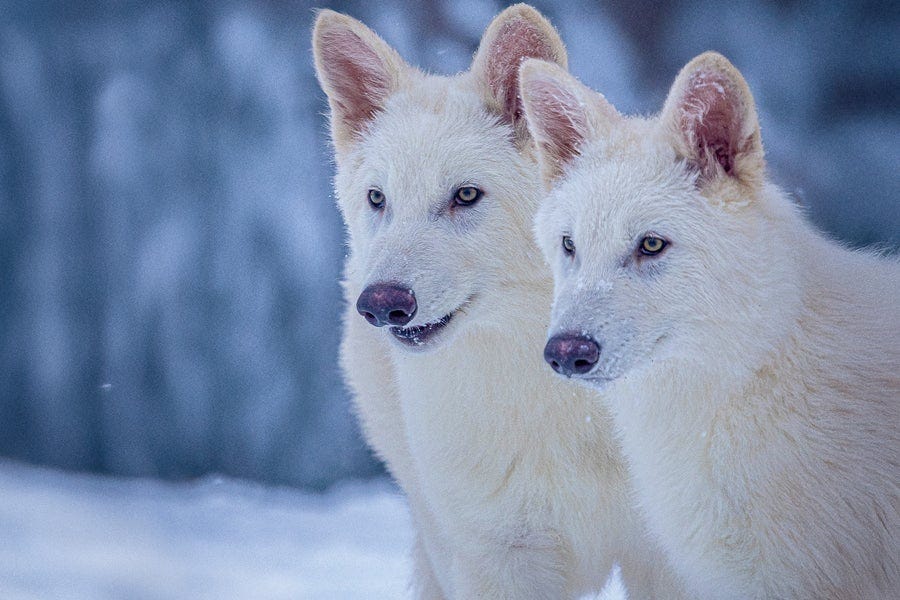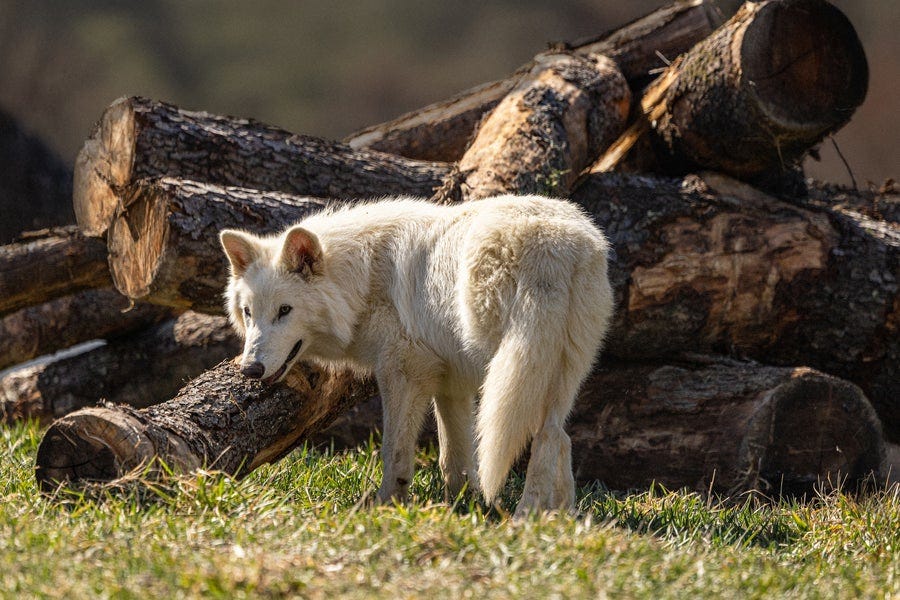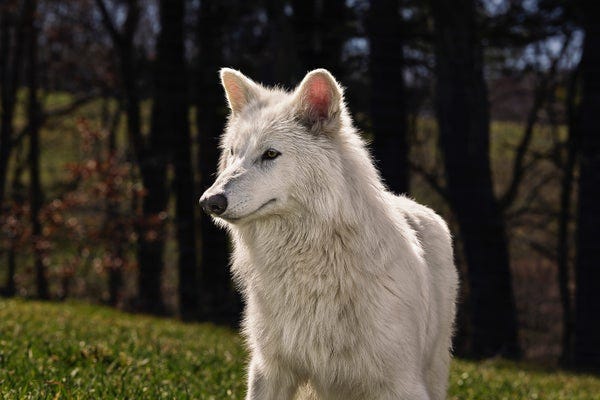Dire Wolves walk again—But what are they really?
Scientists claim to have revived the extinct dire wolf using ancient DNA and cloning. But is it really back—or just a genetically edited gray wolf with a prehistoric twist?
Hey everyone, welcome back to the newsletter. This week, we’re diving into something that sounds impossible—until now. Imagine a predator from the Ice Age, a beast that roamed North America alongside saber-toothed cats and mammoths. It vanished over 10,000 years ago, swallowed by extinction. But now, in a twist that feels more sci-fi than science, it’s back.

We’re talking about the dire wolf. Not in a fantasy show. Not in a museum. But alive—reborn in a lab in Dallas. Colossal Biosciences, a biotech company, claims it has brought the dire wolf back using gene editing and cloning. Three pups. Real animals. Living, breathing, howling echoes of a long-dead species. This isn’t a movie. This is happening. And it could change everything we think we know about extinction.
Is Dire Wolf back from the dead?
On April 8, Colossal announced the birth of three pups—Romulus, Remus, and Khaleesi. These aren’t just ordinary wolves. They carry genes pulled from dire wolf DNA preserved for thousands of years in ancient bones. Using high-tech gene editing and cloning techniques, Colossal inserted key dire wolf traits into gray wolf cells. Then, using surrogate dogs as carriers, they brought the pups to life. That’s right—puppies born with ancient genes. If you want to read more related this topic click here.
Here’s how they did it.
The team took DNA from a 13,000-year-old tooth and a 72,000-year-old skull. After decoding the full genome, they compared it with that of gray wolves. They found 20 major differences across 14 genes. These genes shaped the dire wolf’s most recognizable traits—its massive build, white fur, wider skull, larger teeth, and howls that echoed through Ice Age forests.
Then, using gene-editing tools, scientists rewired gray wolf cells to express those ancient traits. The final step? Cloning. They took those edited cells, placed them into gray wolf eggs, and implanted the embryos into dogs. After 65 days, the first two pups were born. A few months later, Khaleesi arrived.
Colossal didn’t just create wolves that look different. They claim to have recreated behavior and biology that once belonged to a species gone for millennia. It sounds wild. And it is. But many scientists aren’t buying the hype.
Some argue the science is more marketing than miracle. The edited wolves may look like dire wolves, but they’re still mostly gray wolves—just with a handful of gene tweaks. A few experts have gone further, calling it misleading.
One paleontologist noted that recent research shows dire wolves were a separate branch of canines, not even true wolves. That makes the genetic match far from complete. Others raised concerns about the ethical implications of bringing back animals for which no natural habitat remains.
Many researchers were also quick to note that according to a 2021 genetic analysis published in Nature, the dire wolf might not even be a wolf at all, belonging instead to a North American lineage of dogs that diverged from the ancestors of gray wolves more than 5 million years ago.
Angela Perri, the lead author of that study, was also quoted:
“The dire wolf was more closely related to the African jackal than the gray wolf and may have resembled ‘a giant, reddish coyote.”
Colossal has bigger plans. They want to bring back the woolly mammoth by 2028. They’ve already created mice with thick, woolly coats using mammoth genes. Next up: applying the same process to elephants. They also want to save endangered animals, like the pink pigeon, which is barely surviving in Mauritius.
Their strategy involves editing pigeon DNA and growing it inside chicken eggs to boost genetic diversity. The science is bold. The ambition is massive. But the debate is real.
Are we fixing nature—or playing with it? Can we justify spending billions to bring back extinct animals while endangered species struggle to survive?

None of this is easy, and none of it comes cheap.
Colossal spent years decoding ancient DNA, editing genes, and implanting embryos into surrogate dogs. The result? Three pups that look and act like dire wolves—Romulus, Remus, and Khaleesi.
But are they really back? Scientists disagree. Critics say the animals are just edited gray wolves, not true revivals of a long-lost species. Others worry about ethics, habitat, and priorities. Still, one thing is clear—this isn’t just science fiction anymore. It’s science, alive and howling.
You decide.
Until next time,
Top environmental news of the week
Podcast
In our latest episode of the Ground Report podcast Mind Your Earth, investigative journalist Gerald Flynn paints a stark picture of Cambodia's environmental crisis, where forests disappear overnight and reporting on such issues can lead to exile or worse.
Signing out
Thanks for reading The Ground Report. We spotlight rural environmental issues often overlooked by mainstream media. Our focus? The communities most impacted by climate change, where livelihoods depend directly on the environment. Stay tuned for more stories from India's heartland.
We need your support to continue this effort. Share our work as much as possible and also support us financially.
Follow Ground Report on X, Instagram and Facebook for environmental and underreported stories from the margins. Give us feedback on our email id greport2018@gmail.com.
Don't forget to Subscribe to our weekly newsletter, join our community on WhatsApp, and Follow our YouTube Channel for video stories.
Check out Climate Glossary to learn about important environmental terms in simple language.






